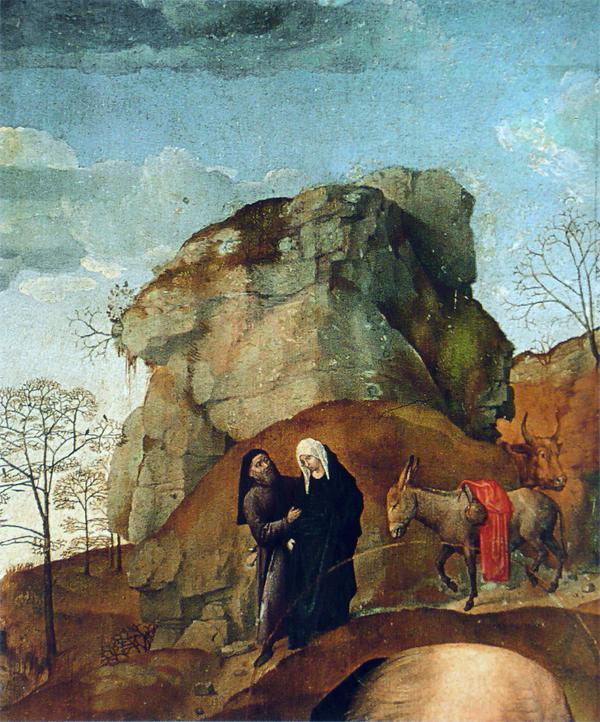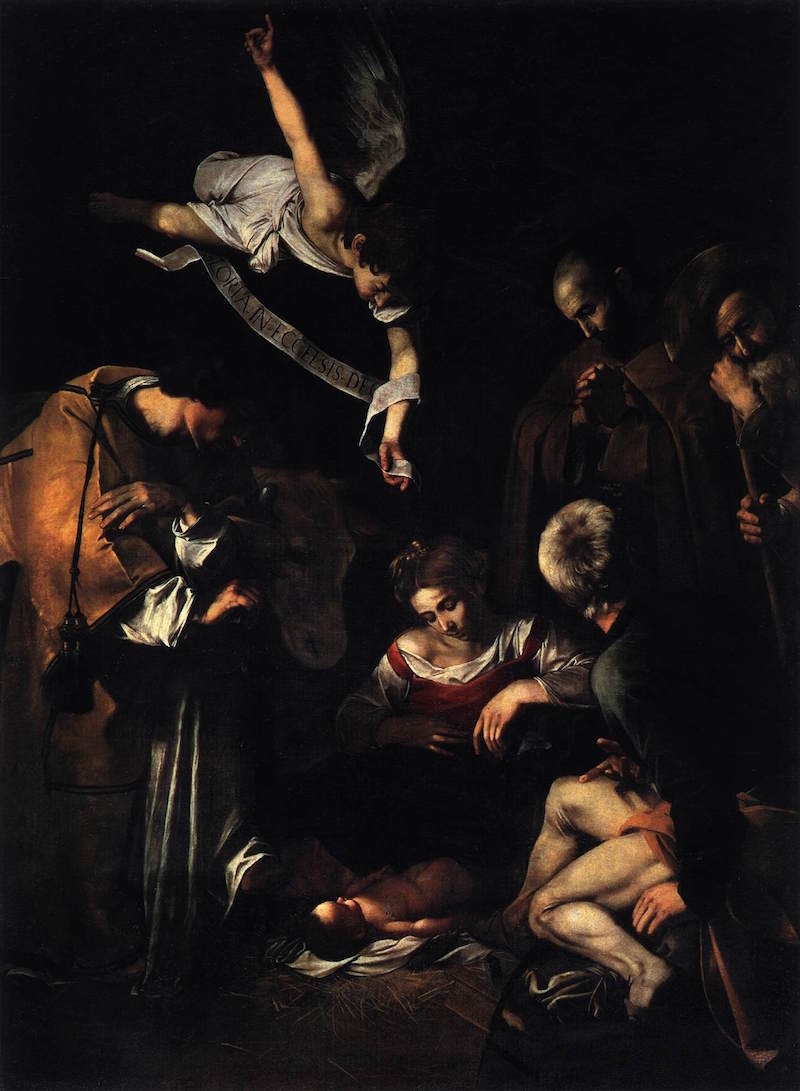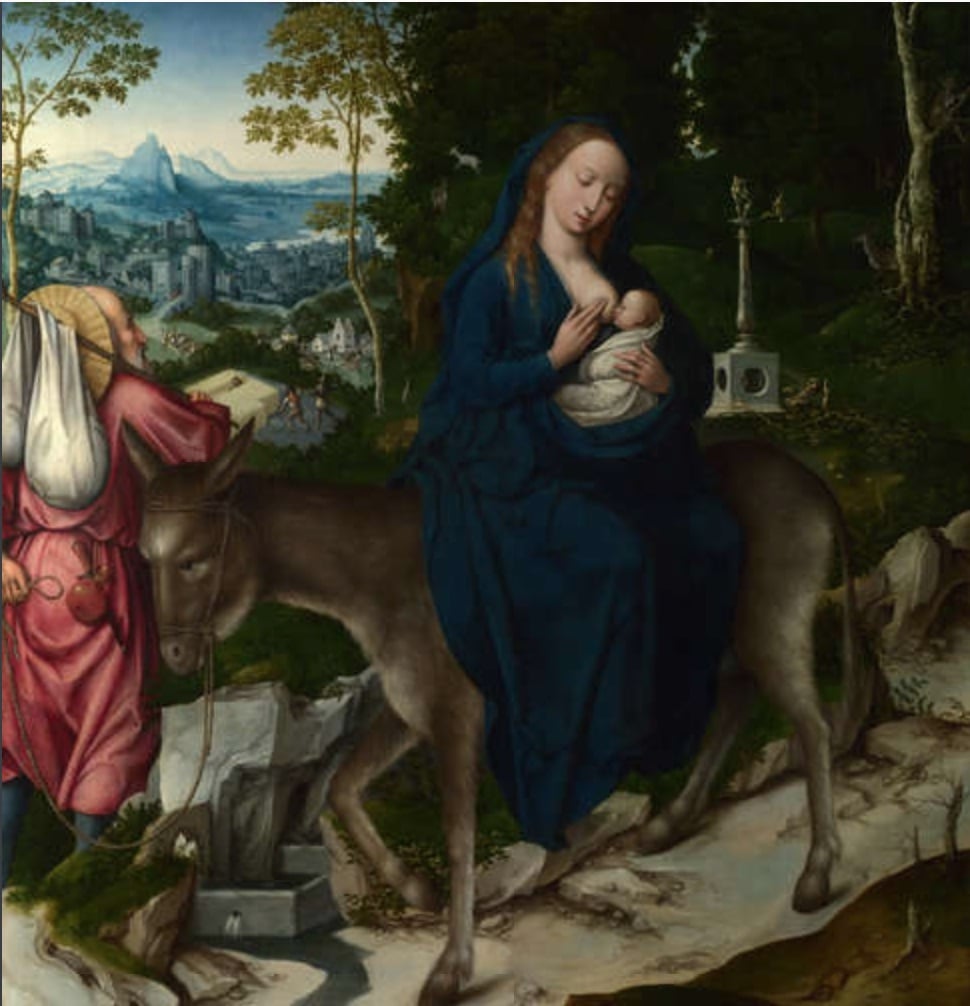Art World
The Christmas Story Told in 10 Old Master Paintings
There's no lack of old master paintings of the story of Christmas.
There's no lack of old master paintings of the story of Christmas.
Henri Neuendorf


Botticelli The Annunciation (1489)
Photo: Wikimedia Commons
The lack of literacy in pre-Renaissance and Renaissance times led the Catholic Church and wealthy merchants to commission a large number of painters to tell the story of the origins of Christianity—the Christmas story—in pictures. Artists and painters were in constant competition with each other to get the lucrative Church contracts, which consequently led to some of the most stunning masterpieces in Western art. Here we re-tell the Christmas story in 10 of the most beautiful Old Master paintings.
1. Botticelli The Annunciation (1489)
The Chapel of the Florentine monastery Cestello commissioned the Florentine Renaissance master Sandro Botticelli to paint the archangel Gabriel visiting the Virgin Mary to deliver the news that she will give birth to the son of God. Her face beautifully illustrates the emotional nature of the news she has just received.

Rembrandt Dream of Joseph (1645)
Photo: Wikimedia Commons
2. Rembrandt Dream of Joseph (1645)
The Flemish painter depicts Christ’s earthly father who agrees to wed Mary when he discovers she is pregnant. In the gospel of Matthew, God sends an angel to Joseph in a dream to explain the divine conception and instructs him to name the child Jesus.

Hugo van der Goes Mary and Joseph on the Way to Bethlehem (1475)
Photo: Galleria degli Uffizi, Florence, Italy
3. Hugo van der Goes Mary and Joseph on the Way to Bethlehem (1475)
The painting, which is a part of the Portinari Altarpiece, shows Mary and Joseph traveling to Bethlehem. The Flemish artist beautifully illustrated Mary’s advanced pregnancy by depicting the aging Joseph carefully guiding his wife down the steep and rocky mountain.

Pieter Bruegel the Elder The Census at Bethlehem (1566)
Photo: Wikimedia Commons
4. Pieter Bruegel the Elder The Census at Bethlehem (1566)
Set in a snowy, winter scene inspired by his native Flanders, Pieter Bruegel the Elder depicts Mary and Joseph on their way to be registered in a census ordered by the Romans. Bruegel had a tendency to depict biblical events in a contemporary and local setting, which this painting illustrates perfectly.

Caravaggio Nativity with St Francis and St Lawrence (1609)
Photo: wga.hu
5. Caravaggio, Nativity with St Francis and St Lawrence (1609)
Caravaggio’s last large-scale painting shows the Virgin Mary resting and gazing at the child she’s just given birth to. The artist contravened convention by placing an unnamed youth prominently in the foreground who looks towards an aging Joseph. Sadly, the artwork was famously stolen in a suspected mafia heist in 1969 and has been missing ever since.

Benozzo Gozzoli Procession of the Magi (Eastern Wall) (1459-1461)
Photo: Wikimedia Commons
6. Benozzo Gozzoli The Procession of the Magi (1459-1461)
Commissioned by the Medici family, this multi-panel fresco located in the chapel of the Palazzo Medici Riccardi in Florence shows not the three kings, but a procession of thirty-three on the way to Bethlehem to praise the newborn baby Jesus. It portrays the biblical story for a contemporary audience. The artist painted the entire Medici clan, and himself, amongst the procession.

Rubens Adoration of the Magi (1609-1610)
Photo: Wikimedia Commons
7. Rubens The Adoration of the Magi (1609-1610)
Depicting the three kings worshipping and offering gifts to the newborn son of God, this masterpiece is considered one of Rubens’ most important works. The baroque master was commissioned to paint the masterpiece by the Antwerp town council in 1609 and was presented to the Spanish ambassador as a peace offering at the end of the 12-year war in 1612. It was later acquired by Philip IV of Spain.

El Greco Adoration of the Shepherds (1612–1614)
Photo: Wikimedia Commons
8. El Greco The Adoration of the Shepherds (1612-1614)
Completed by the Spanish Renaissance painter in the last year of his life in the master’s trademark distorted style, the artwork depicts the shepherds who came to Bethlehem to celebrate the birth of the newly born son of God, together with the angels that circle above them.

Workshop of Goossen van der Weyden Flight to Egypt (ca. 1516)
Photo: The National Gallery, London
9. Workshop of Goossen van der Weyden Flight to Egypt (ca. 1516)
The angel of the Lord returns to Joseph in a dream to warn him about King Herod’s plan to kill the newborn baby Jesus, viewing him as a potential rival to his throne. The painting shows Joseph heeding the angel’s advice and fleeing to Egypt with his young family.

Raphael Sistine Madonna (1512)
Photo: Wikimedia Commons
10. Raphael Sistine Madonna (1512)
Commissioned by Pope Julius II for the church of San Sisto Piacenza, the artwork shows the Virgin Mary holding the Christ Child with Saint Sixtus and Saint Barbara on either side of her. The two cherubs on the bottom of the canvas are perhaps more famous than the rest of the composition.